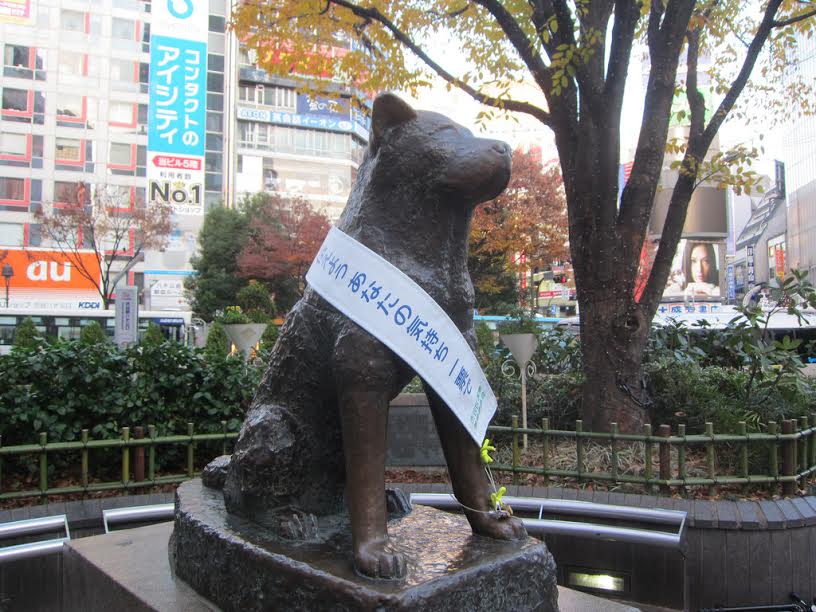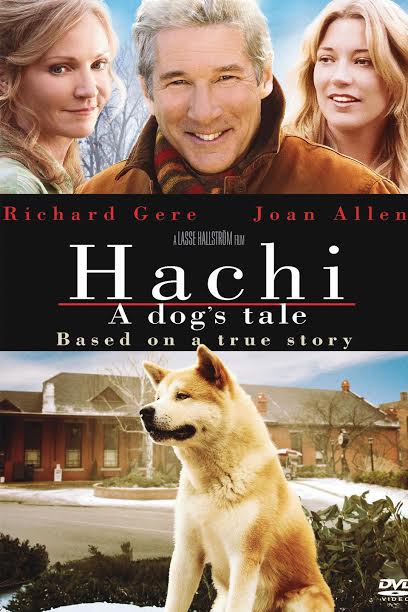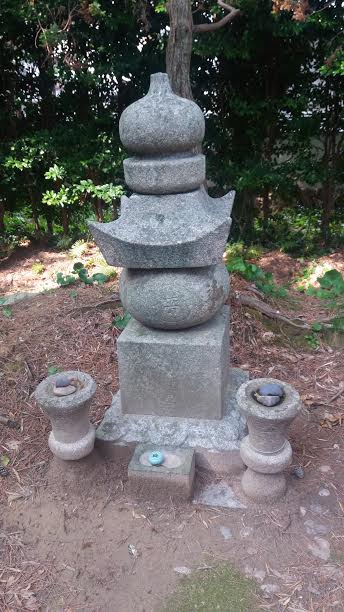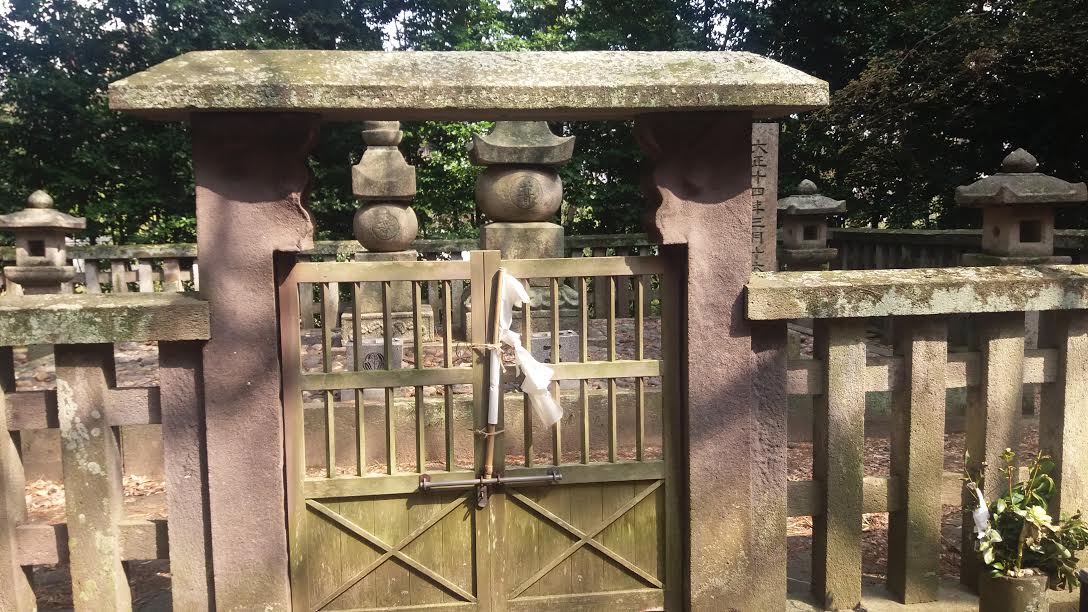We were all a bit cranky by the time we found the graveyard.
Don’t get me wrong, Hagi is lovely. It’s one of those Japanese towns that’s nestled between the sea and the mountains in the Yamaguchi prefecture, where history and modern day blend harmoniously together.
From the 7-Elevens to the renowned historic pottery shops, the entire town has its eyes turned toward the ruins of Hagi Castle. But just because you can walk those glorious Edo era streets (c. 1600-1868) with a glorious Edo era map doesn’t mean you can’t get gloriously Edo era lost.
Getting lost in Japan is not difficult, as the organization of streets isn’t always the most intuitive for westerners. Even life-long residents of places like Tokyo will tell you that you “just have to know” where certain streets bend, split, or disappear. I’ve lived in Japan for over two years now, and if you give me a random address and tell me to “Go find it girl!” I’ll ask you to pack me a sandwich because I’ll be gone for a while. (Yes, yes, Google Maps, but unless you’re a skilled tracker, a series of directions that say, “Turn left, turn left, turn right, now walk on water,” only goes so far.)
So with my mother-in-law, her friend, and my husband in tow, I had somehow been put in charge of finding our cemetery destination after our trip to the castle ruins. My first mistake was bragging about my “Labrador powers” AKA my uncanny sense of direction. I don’t even know if Labradors have a good sense of direction.
After wandering around and around and around Hagi’s streets for (a not unpleasant) afternoon (in my opinion), my little group’s sense of adventure was waning.
“How is this another special graveyard?” My mother-in-law asked. I chose not to hear the eye-roll in “another.”
“It’s the Hachiko cat grave!” I said.
That’s what I’d been calling the goal of our quest, the Hachiko Cat grave. It’s actually a misnomer in a lot of ways, but calling it “The Grave Where the Guy’s Loyal Cat Died” is just a mouthful. The grave is not actually the cat’s grave, but the cat’s owner’s grave. So says legend. And Hachiko, as many of you may know, is not actually the cat, but the name of one of Japan’s most beloved symbols of loyalty: Hachiko the dog.

 I won’t go too far into Hachiko’s story, as that pup’s had more than his fair share of Internet fame – like here, here, and here, not to mention that movie with Richard Gere.
I won’t go too far into Hachiko’s story, as that pup’s had more than his fair share of Internet fame – like here, here, and here, not to mention that movie with Richard Gere.
Basically what you need to know is that Hachiko was a loyal Akita dog that belonged to a professor who lived in Shibuya, Tokyo in the early part of the 20th century. Everyday Hachiko would walk his master to the Shibuya train station, see him off to work, then wait for him to return. However one day, in 1925, his master died of a brain hemorrhage and never returned to the station.
As the story goes – and Hachiko has surely become the stuff of legends – Hachiko continued to wait at Shibuya train station for 10 years, waiting for the master that would never return. He eventually died and is now immortalized as a statue at Shibuya station. You can visit Hachiko’s taxidermied body at the National Museum of Nature and Science in Ueno Park.
Japan loves myths of loyalty and mortality, bonus points if that myth involves animals.
Enter the kitty.
When the Japanese warlord Mori Terumoto, of the powerful Mori clan of Hagi, died in 1625, his loyal samurai, Nagai Motofusa died too (likely by suicide). As the sign at his grave says, he died because, “He felt a deep gratitude towards his lord.” Talk about loyalty.
But when Nagai died, he left behind his “beloved cat”. That cat, also probably feeling a “deep gratitude” towards Nagai, supposedly refused to leave his master’s grave for 49 days. It is said that the cat was observing the Buddhist Houyou memorial ceremony to mourn the dead.
After 49 days, the cat couldn’t take it anymore, bit his tongue, and bled to death on Nagai’s grave. Leave it to a cat to take the most metal route to death.
According to Hagi legend, that night all the cats of Hagi raised their collective feline voices in honor of Nagai’s cat.
Feeling sorry for the kitty – and probably hoping to quiet Hagi’s yowling cats – a priest at Tenjuin Temple (which once stood at the gravesite) decided to perform memorial rites for the cat.
As soon as he did, the Hagi cats stopped wailing.
And though the temple is gone, the nearby temple, Unrinji, keeps the memory of Nagai’s cat alive by maintaining a special devotion to cats. Called the “Cat Temple” or nekodera in Hagi, the temple is chock full of cat artwork, statues, and blessings.
Furthermore, the area where Nagai’s house was once located has been dubbed “Cat Town”. It’s been said that ghostly meows were heard from Nagai’s house after his cat’s death, and to this day some say the forlorn ghost cat’s mews can still be heard in Cat Town.
Hagi takes a special pride in the story of their loyal cat. Granted “cat tourism” is not unusual in Japan (cat cafes, cat temples, cat islands can be found throughout the country), but there is a sort of reverence for cats in Hagi. With devotion and loyalty being part of the foundation on which Japanese culture was founded, combined with an enduring love of cats, Nagai’s cat checks all the boxes for the stuff of legends.
Plus it doesn’t hurt to have a local tale that rivals the Hachiko story (at least for those in the know). While most tourists visit Hagi to see the ruins of the castle, the cat story certainly appeals to Japanese affections. Hagi even has a cartoon cat mascot depicted in its tourist information center that enthusiastically highlights points of interest and how “EXCITING!” Hagi is.
If you’re so inclined, you can buy an adult sized, Hagi mascot cat costume for a few thousand US Dollars. No judgement, you do you.

But that day in Hagi I was not in search of cats, I was in search of Nagai Motofusa’s grave. While the temple is gone Nagai’s grave, as well as the graves of Mori Terumoto and wife, remain to this day.
After all the wrong turns, and terrorizing Hagi locals with my crappy Japanese (Crapanese), we finally stumbled upon the tiny graveyard. Behind a section of white wall, marked by only a small sign, in what looked like someones backyard, we found the historic graves.
Originally the site of Mori Terumoto’s home (destroyed in 1869), the property only holds three graves. The Mori graves, a significant clan in Japanese feudal history, are surrounded by a traditional basalt fence typically reserved for Shinto shrines, and are protected by a gate. For a warlord from a major family, the graves are stately but subtle; elegant but unassuming.
Just off the stone path that leads to the Mori graves, outside the basalt fence, sits Nagai’s grave.
Echoing the architecture of the Mori graves, it’s also rather unassuming, smaller than I thought it would be. The casual observer might not even know it’s a grave if it weren’t for the nearby placard.

It was on this spot that Nagai’s grieving cat supposedly bled to death hundreds of years ago.
While every legend of this sort is subject to the layers of embellishment and romanticizing that the ages heap upon it, on that bright day in Hagi, it was nice to enjoy what might have been.
Maybe Nagai really did have a cat he dearly loved. Maybe that cat did appear to be distraught when his master didn’t come home. Maybe somebody got confused and when a cat died near the grave, they conflated the cats and a legend was born. Maybe the people at the time needed such a story. Why look a good legend in the mouth?
And if nothing else, the story of Nagai’s cat led me to a cheery, little graveyard (for a warlord) that I might not have ever known existed. Death folklore (with cats!) plus historic graves? I’ll take it!
Leaving the Mori graveyard that afternoon, everyone’s spirits seemed to be lifted a bit. Not only had we achieved our (my) goal, but we’d also walked all over the Edo era. How often do you get to do that?
Back out on the street, watching a fleet of school children on bicycles ride by, our ragtag group seemed revived. Perhaps it was the promise of ice cream then the relief of sitting on a bus, but I’d like to think it was the experience of paying our respects at the crossroads of legend and history.
Louise Hung is an American writer living in Japan. You may remember her from xoJane’s Creepy Corner, Global Comment, or from one of her many articles on death, folklore, or cats floating around the Internet. Follow her on Twitter.


